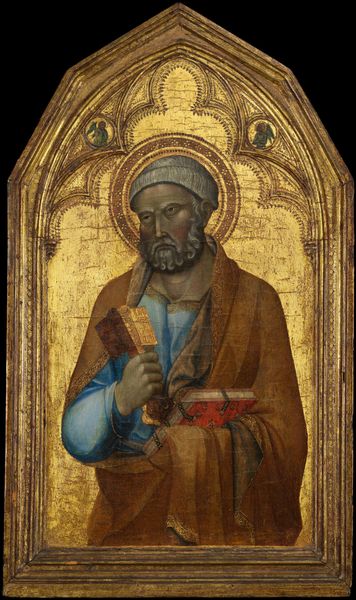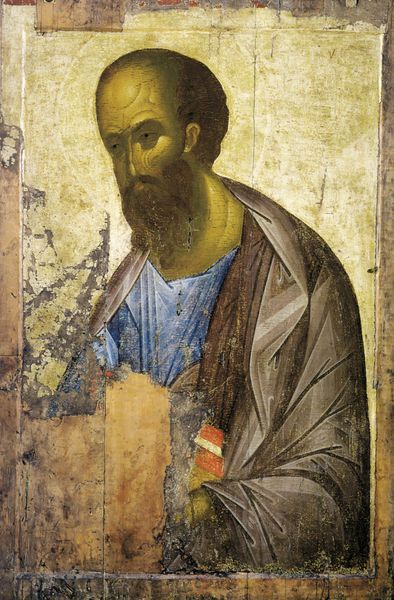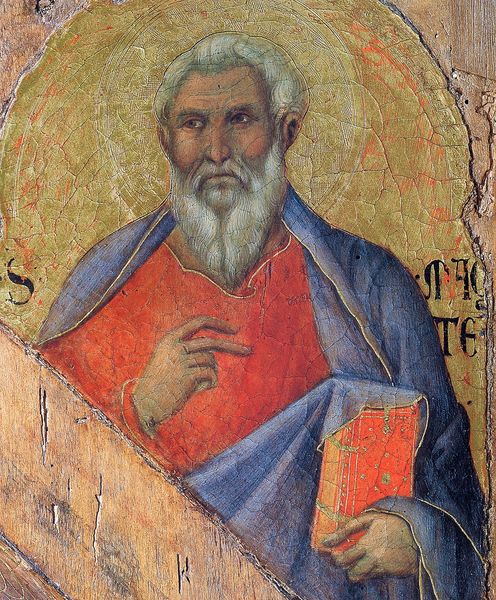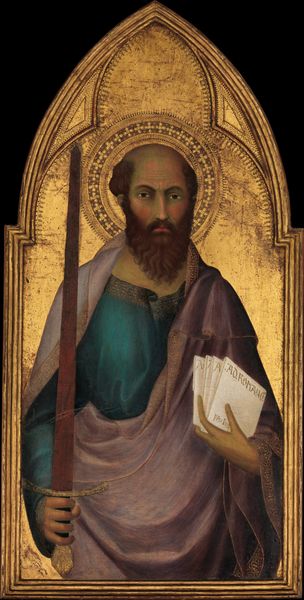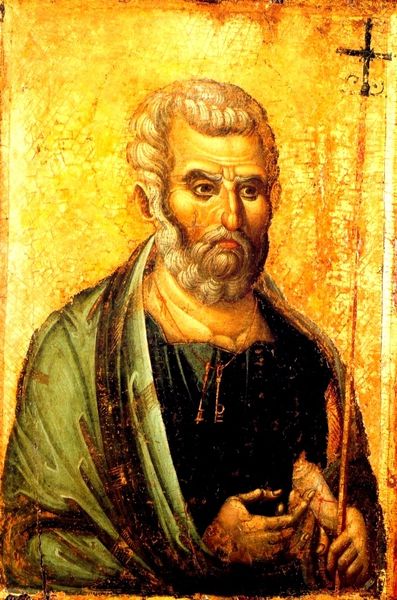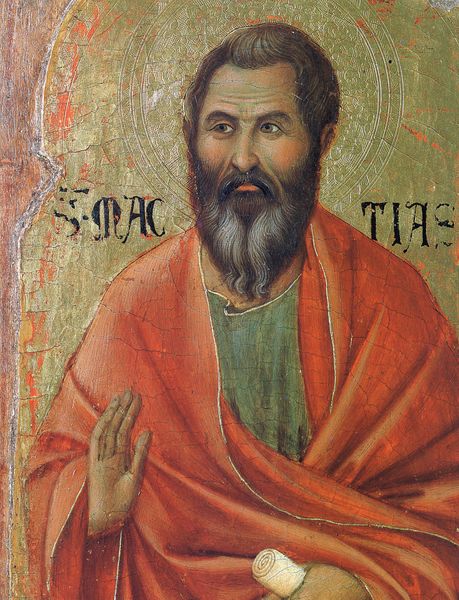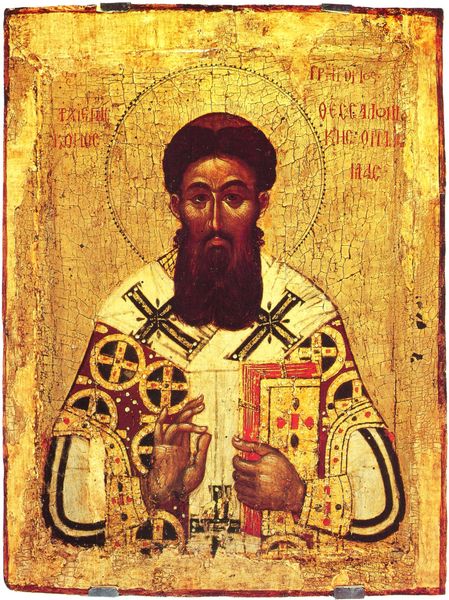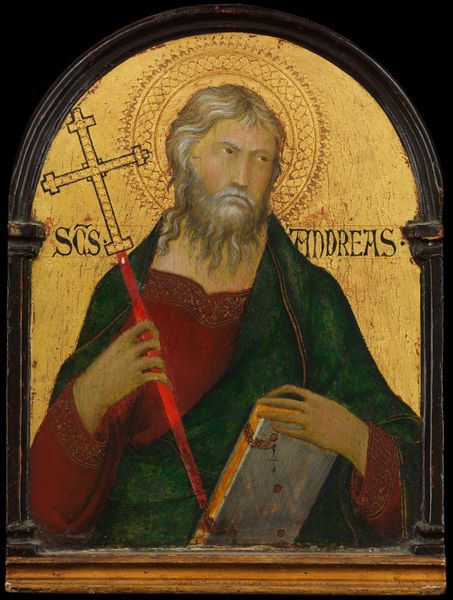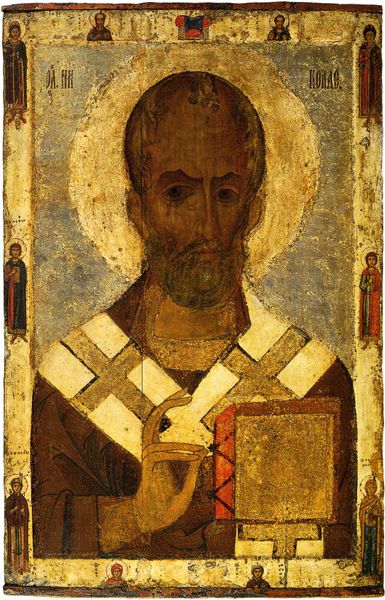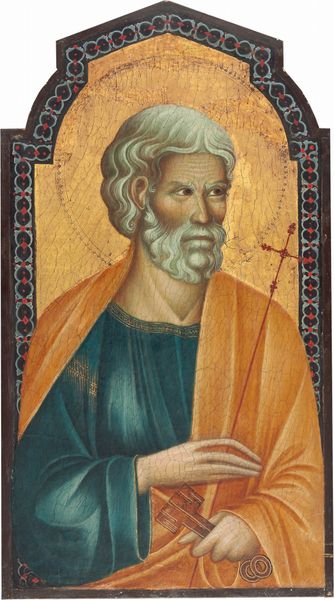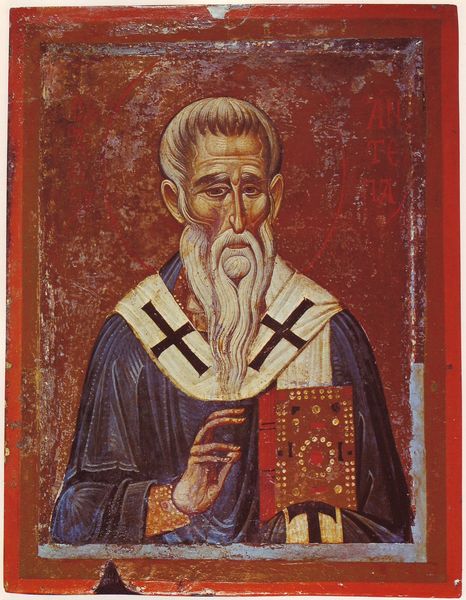
tempera, painting
#
portrait
#
byzantine-art
#
medieval
#
tempera
#
painting
#
oil painting
#
history-painting
#
miniature
Copyright: Orthodox Icons,Fair Use
Editor: Here we have *Saint Matthew*, a tempera on panel from about 1350, rendered in that characteristically Byzantine style. It's striking how human Matthew seems despite the stylization. I'm especially drawn to his contemplative gaze. What do you make of this piece? Curator: Oh, he's quite a chap, isn’t he? It's a beautiful example of how Byzantine art walked this tightrope between the divine and the relatable. That gold background practically screams otherworldly, right? But then you’ve got Matthew, brow furrowed, looking like he’s actually *pondering* something profound. He is writing the gospel after all! Does the rendering make you think of how an icon might function in devotional practice? Editor: I hadn’t thought of it quite that way, but it does give me a sense of Matthew as a real person grappling with immense theological ideas. I always thought of Icons as more…static. Curator: Static, yes, but potent, don’t you think? And, notice how his hands are rendered, the delicacy of those fingers holding the book. It is almost as though the artist knew his handiwork might inspire others. I imagine candlelight flickering on the gold leaf… transporting, really. Editor: Definitely! The more I look, the more nuances I see, like the texture of his beard and the worn edges of the book. The way he's holding it tells a story, too. Curator: Exactly. A story crafted not just from paint, but from centuries of faith, tradition, and artistic skill. And in our time of looking we got to consider both what’s painted and what it does to us as we watch. Editor: What a wonderful insight. I’ll never look at Byzantine art the same way again.
Comments
No comments
Be the first to comment and join the conversation on the ultimate creative platform.
